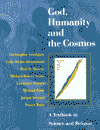The Evolution of Hominids
The fossil record of the hominids (Homo Sapiens and its relatives) is sparse, with many long gaps
(since fossils only tend to be found where the process of fossilisation occurs
most readily). The evolution of the hominids is therefore not well understood
in detail and new fossil finds are still causing significant changes to the
proposed lines of descent.
| |
Height (m) |
Physique |
Brain size (ml) |
Skull form |
Jaws/teeth |
Distribution |
Known date (years ago) |
|

Homo habilis (small) |
1 |
Relatively long arms |
500-650 |
Relatively small face; nose developed |
Thinner jaw; smaller, narrow molars |
Eastern (+ Southern?) Africa |
2-1.6 million |

Homo habilis (small) |

Homo habilis (large) |
c. 1.5 |
Robust but 'human' skeleton |
600-800 |
Larger, flatter face |
Robust jaw, large narrow molars |
Eastern Africa |
2-1.6 million |

Homo habilis (large) |

Homo erectus |
1.3-1.5 |
Robust but 'human skeleton' |
750-1250 |
Flat, thick skull with large occipital and
brow ridge |
Robust jaw in larger individuals; smaller
teeth than H. habilis |
Africa, Asia and Indonesia (+ Europe?) |
1.8-0.3 million |

Homo erectus |

'Archaic Homo Sapiens' |
? |
Robust but 'human skeleton' |
1100-1400 |
Higher skull; face less protruding |
Similar to H. erectus but teeth may be
smaller |
Africa, Asia and Europe |
400,000-100,000 |

'Archaic Homo Sapiens' |

Neanderthals |
1.5-1.7 |
As 'archaic H. sapiens' but adapted for cold |
1200-1750 |
Reduced brow ridge; thinner skull; large
nose; midface projection |
Similar to 'archaic H. sapiens'; teeth
smaller except for incisors; chin development in some |
Europe and western Asia |
150,000-30,000 |

Neanderthals |

Early modern Homo sapiens |
1.6-1.85 |
Modern skeleton; adapted for warmth |
1200-1700 |
small or no brow ridge; shorter, higher
skull |
Shorter jaws than Neanderthals; chin
developed; teeth may be smaller |
Africa and western Asia |
130,000-60,000 |

Early modern Homo sapiens |
From The Cambridge
Encylopedia of Human Evolution, p251. Reproduced with permission of
Cambridge University Press.
See the Neanderthals for a particularly interesting
test-case in the understanding of the process by which humans became human.
Email
link | Feedback | Contributed by: Dr. Christopher Southgate and Dr. Michael Robert Negus
Source: God, Humanity and the Cosmos (T&T Clark, 1999)
|











